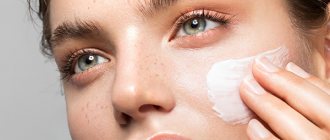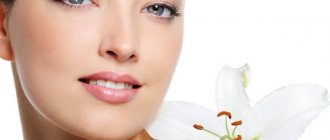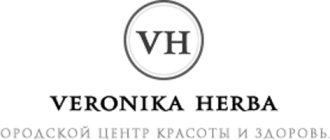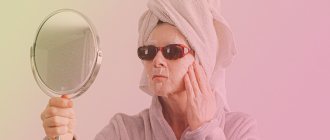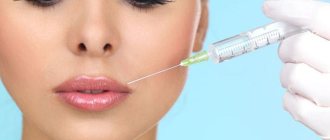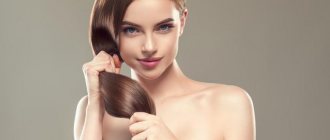A couple of injections in the face and you have a smooth forehead. Botox has insidiously lured millions of women into its networks with promises of instant youth. But the botulinum therapy procedure is no longer a year old, not two, or even a decade old—one can draw conclusions about its real “effectiveness.”
You might have observed yourself, from the example of some friend, how, a couple of days after a Botox injection in the forehead and between the eyebrows, the target areas were smoothed out, but in general her face seemed to be aging: the skin became more flabby, bumpy, and wrinkled. Alas, this is not some kind of exception to the rule, not an individual reaction, as cosmetologists would like to interpret such anti-effects. The problem is that Botox accelerates aging, and there is scientific evidence for this.
What’s even worse is that you become addicted to the “injections of youth.” Firstly, the effect in the injection area does not last long (3-5 months for beginners, 1-2 for botulinum-dependent ones), and secondly, age-related changes in other areas of the face accelerate, which requires more and more botulinum poison. The pioneers of Botox, who have been abusing this toxin for many years, can no longer do anything about the ugly changes in appearance that make them look like the living dead.
Let's figure out why you shouldn't inject the strongest poison known to mankind into your forehead.
Why do wrinkles appear on the forehead?
Wrinkles on the forehead first appear as facial wrinkles and can appear even in very young people if they have active facial expressions. They frowned - and there they were, the creases between the eyebrows, and were surprised - the longitudinal furrows on the forehead. With age, expression lines become deeper and become static.
On average, age-related changes on the face occur from the age of 25. It is believed that before this, blood, and with it oxygen and nutrients, flow to the skin of the face in a normal manner, and then their deficiency occurs, as blood circulation is reoriented to internal systems. Because of this, changes occur in both the skin and muscles.
The skin on the forehead loses its firmness and elasticity, and the muscles spasm from overexertion. It turns out that the muscles shorten and the skin gathers into folds.
And don’t think that the formation of wrinkles on the forehead is caused by a spasm of the frontalis muscle only. The process also involves the masticatory and temporal muscles, the occipital muscle (works in tandem with the frontal muscle), the aponeurosis of the head (the tendon structure covering the upper part of the skull) and even the feet.
Botox: the illusion of a miracle
For almost 30 years, the “magic” procedure of botulinum therapy, which comes from medicine, has been used to smooth out wrinkles on the face. Just 15 minutes on the couch with a cosmetologist who will give you an injection, another, and you have a smooth forehead again (the effect appears 2-3 days after the procedure). The return of youth, as if by a wave of a magic wand, is not this a miracle? No. Not a miracle. This is a deception, and a very dangerous one at that.
Botox is a drug based on botulinum toxin, the strongest natural poison known to science. It is a neurotoxin, that is, it has a neuroparalytic effect: it blocks the transmission of nerve impulses to the muscle, as a result of which it is paralyzed.
Botulinum toxin was discovered as the causative agent of mass fatal poisoning from spoiled sausage, which is why it received the name sausage poison (Botulinum toxin). Then they learned to produce it for military and sabotage purposes. The resulting substance, botulinum toxin type A (BTA), turned out to be a powerful bacteriological weapon capable of destroying all of humanity. To do this, you only need 4 kilograms of the deadly botulism bacterium, which produces botulinum toxin!
Botulinum poison entered cosmetology because of the smoothing effect in the forehead and between the eyebrows, which was accidentally discovered during the treatment of some eye anomaly with this poison. Botox began to be injected into different areas of the face and neck, but injections into the forehead and between the eyebrows, where it all began, remained the most popular option for using this toxin for aesthetic purposes. The principle of action of Botox in cosmetology is the principle of action of poison. The target muscles are paralyzed and stop contracting, the forehead and eyebrows become straight for a short time.
The idea of a highly diluted poison, which, due to its low concentration, supposedly does not harm the body, initially created the illusion of a miracle. But years and even decades later, the illusion dissipated. There is scientific evidence that Botox is harmful. Before your eyes is the experience of millions of women who injected this poison into the forehead and between the eyebrows (their reviews and photos before and after Botox are in the public domain - look). Moreover, one can judge not only the immediate complications that occur after the procedure, but also the long-term effect, ugly changes in appearance years later.
What drugs are used
For rejuvenation with injections we use the following drugs:
- Botox (Botox);
- Dysport;
- Repleri (Repleri);
- Aquashine (Aquashine);
- Hyaron (Huaron);
- Juvederm (Yuvederm);
- Rejeunesse (Rejeunesse);
- Aqualyx (Akvaliks), etc.
The scheme of anti-aging injections is compiled individually for each patient. Sometimes it is necessary to correct not only wrinkles, but also age spots. Sometimes patients complain of large pores or acne. A cosmetologist cannot give a universal recipe for beautiful skin. He will be happy to create a personal transformation program for you!
"Pros" and cons of Botox in the forehead and between the eyebrows
Against the background of numerous disadvantages of Botox in the forehead and between the eyebrows, its only advantage - smoothing out wrinkles for a short time - is perceived as a very controversial argument in favor of this toxic procedure.
It's like going to chemotherapy just because you're tired of shaving your head.
Botox is a poison, and even in low concentrations it acts like a poison. It harms both health and beauty. It's impossible to kill a little bit.
What are the health risks of Botox on the forehead and between the eyebrows?
- Muscles paralyzed by botulinum toxin do not fully recover.
- Botox has a tendency to diffuse, that is, to spread beyond the target muscles. Due to this lack of control, the poison can accidentally paralyze neighboring areas, which leads to double vision (diplopia), facial asymmetry, drooping of the upper eyelid, up to the complete inability to open the eyes, and other consequences. In addition, botulinum toxin spreads throughout the body, creating a risk for any part of it.
The consequences of Botox are frightening: various vision pathologies including blindness, headaches and migraines, disturbances in the functioning of the nerves of the skull, heart, skeletal muscles, etc.
Western neurologists are very wary of Botox. They believe that it is necessary to study several generations of patients for decades to determine how botulinum toxin affects the brain, nervous system, and muscles. Current statistics, in their opinion, are not enough to judge the real complications from this drug.
Is the craving for beauty so high that it overshadows common sense and concern for health? Have you already made an appointment with a cosmetologist and allocated 5-10 thousand rubles from your budget for the first procedure (believe me, this is just the beginning, hundreds of thousands will be needed)? Know: Botox kills beauty.
What is the harm of Botox on the forehead and between the eyebrows for beauty:
- Botox does not fight aging, but speeds up the process. Bye. The muscle deactivated by the poison sleeps like a dead sleep, its neighbors work for it. This leads not only to overload and wear of the muscles working instead of atrophied ones, but also to a shift in the vectors of skin tension. What does it mean? One after another, new, compensatory wrinkles and creases appear, and in places where they were not there a couple of days ago. As a rule, after Botox in the forehead and between the eyebrows, such surprises are wrinkles on the sides of the forehead, as well as in the area around the eyes. What do cosmetologists offer? Wait a couple of weeks until the drug “sets up”, and if new wrinkles do not disappear during this time, then inject Botox into them as well.
- Botox in the forehead and between the eyebrows often has aesthetic side effects:
- Bruises and hematomas,
up to huge scary dark spots. Cosmetologists consider them to be the norm for Botox injections, since capillary damage is inevitable with injections. - Edema.
Due to impaired muscle tone, blood and lymph flow suffers, which is fraught with severe swelling. There are also allergic reactions in the form of Quincke's edema. - Bumps above the eyebrows.
Ugly bumps are the result of uneven distribution of the drug, which causes some muscle fibers to relax while others remain tense. It is unlikely that a cosmetologist will explain this effect by incorrect technique. Most likely, he will say that this is your individual reaction, and will offer to come back in a couple of weeks for a new dose of Botox to correct the relief. - Ptosis of the upper eyelid (overhang).
A popular phenomenon associated with the fact that the drug ends up outside the affected area. The eyebrows “fall”, the eyelid droops, and sometimes it is impossible to open the eye. - Facial asymmetry.
Do you know how cosmetologists will most likely explain why, after a Botox injection into the forehead and between the eyebrows, the face became distorted? Its natural asymmetry, due to which muscles on different sides require unequal amounts of the drug to “turn off” them. How can you guess where to inject how much? A mystery of nature. - Mask-like face.
An immobilized muscle immediately gives the face an unnatural appearance, as facial expressions suffer. Due to an overdose of Botox, the effect can be completely ugly and not relevant to emotions: for example, you laugh or smile, and on your face there is a terrible mask of disgust or suffering. - Botox in the forehead and between the eyebrows deprives the face of its usual facial expressions, which add charm and liveliness. This poison takes away traits of attractiveness that are an unconscious habit - you may not even know about them. For example, girls with low eyebrows unconsciously raise them, which makes their gaze more open. After Botox on the forehead and between the eyebrows, you can’t play with your eyebrows like that anymore - the muscle is inactive!
Precautionary measures
Like any other injection cosmetological rejuvenating technique, botulinum therapy has a list of contraindications, ignoring which is fraught with serious consequences. Botox injections are not prescribed to patients diagnosed with the following diseases:
- acute infectious diseases accompanied by general poor health, high temperature, fever;
- oncological neoplasms;
- herpes in the active stage;
- exacerbation of chronic diseases;
- cardiovascular disorders;
- cardiac, renal, liver failure;
- diseases of the hematopoietic system;
- autoimmune, hormonal, endocrine, nervous disorders;
- congenital or acquired immunodeficiency;
- damage to the integrity of the skin in places where injections are supposed to be given;
- diabetes.
Botulinum toxin injections are not prescribed for pregnant women, breastfeeding women, or during menstruation. The procedure is contraindicated for patients who are forced to constantly take medications that affect blood viscosity. Also, botulinum therapy is not carried out if a person has an individual intolerance to the components of the drug.
Botox and analogues
In the strict sense of the word, Botox is one of several drugs based on botulinum toxin. The Botox trademark belongs to the American-Irish company Allergan, the founder of the market for the use of Botox in medicine and cosmetology. Also, the word “Botox” is used as a common noun to refer to the entire category of drugs used for botulinum therapy.
Allergan's Botox was the first. But the emergence of competitors was inevitable: women all over the world rushed to pay billions of dollars a year for “beauty injections.”
So Botox has competitors. The main one is Dysport (France). Next come Lantox (China), Xeomin (Germany), Relatox (Russia), Refinex (Japan) and several drugs from South Korea: Botulax, Neuronox, Nabota, Meditoxin.
All these drugs contain the same active ingredient – botulinum toxin type A (BTA). This is the same type of poison that was developed by the military as a bacteriological weapon.
What distinguishes botulinum toxin-based drugs from each other:
- price,
- production technology,
- BTA concentration,
- degree of purification,
- composition of excipients (and therefore allergic reactions),
- molecular weight (a drug with a lower molecular weight is used for injection into the smallest muscle clusters),
- duration of exposure,
- injection pain,
- duration of effect,
- contraindications,
- side effects.
Botox on the forehead and between the eyebrows: the essence of the procedure
What is the procedure for injecting Botox into the forehead and between the eyebrows?
The cosmetologist uses a marker to outline the areas on the forehead that will be under the influence of the drug. These are the longitudinal frontal muscles and the transverse muscles on the bridge of the nose. Botox is injected under the skin with a thin needle approximately 7 mm in several injections. After this, a simple forehead massage is performed to evenly distribute the product. The patient can spend up to 1 hour under medical supervision.
How long does it take for Botox to take effect on the face (forehead and between the eyebrows)?
It is believed that the effect begins to be seen after 2-3 days and reaches a maximum after 2 weeks.
How long does Botox last on the face (forehead and between the eyebrows)?
On average, the drug lasts 3-5 months, but with each new injection addiction develops. Botulinum toxin addicts receive injections every two to three months. In some cases, after injection there is no effect at all.
What should you not do after Botox (forehead and eyebrow area included)?
Alcohol, tanning, cosmetics, massage, sports, baths and saunas, large amounts of liquid and salt, etc. are contraindicated. The point is that blood circulation and metabolism cannot be stimulated so that the poison lingers longer in the body. In the first days after Botox there are many other restrictions.
How many units of Botox will be needed on the forehead and between the eyebrows?
This is a question, the answer to which depends on the position of the cosmetologist and the will of chance. It is believed that the skin in the area of the forehead and between the eyebrows is less pliable, so a larger dosage of the drug is required: from 10-20 units in the forehead and 10-15 in the area between the eyebrows. But how much Botox will actually be used on the forehead and between the eyebrows and the cost of the procedure is a surprise for the patient every time. Often the drug “does not work” the first time, it is administered again, then again. Practice shows that up to 100 units of Botox can be used for each zone.
How often to do Botox on the face (forehead and between the eyebrows)?
For each new portion of poison, patients first come 2-3 times a year, then more often, increasing the dosage. Each time the effectiveness of the procedure decreases, as the tissues get used to the action of the drug.
Reviews of Botox in the forehead and between the eyebrows
To get a complete picture, read reviews about the consequences of Botox injections in the forehead and between the eyebrows. Victims of punitive cosmetology often complain that after the first procedure, Botox “doesn’t work”; they have to go to the cosmetologist again and again in order to somehow correct the effect of a crooked face. There are complaints of severe pain, bleeding, inability to open eyes, and terrible Quincke's edema.
Try entering the combination of words “Botox hurts” into any search engine on the Internet. The search engine will tell you the continuation of this phrase - this is what queries users are interested in. What emerges is a presentable picture of the condition of the patients after the procedure, no worse than the reviews! Judging by such queries, Botox hurts the forehead, back of the head, eye, injection site, head (the query option also contains the clarification: “headache from tension”).
But this is just the tip of the iceberg. As evidenced by popular queries in search engines, victims of punitive cosmetology regularly experience the following side effects: “dropped forehead”, “dropped forehead”, “drooped eyelids”, “bump”, “swelling”, “wrinkles”. Bumps after Botox appear “at the injection sites”, “above the eyebrows”, “bumps on the forehead that do not go away”. When searching for information about Botox and its analogues, users are also interested in “heavy eyes”, “heavy eyebrows”, “heaviness in the forehead”, “bruises”, “bruises under the eyes” and so on.
Statistics are a capricious lady, but they are trying to keep track of them regarding complications from Botox in the forehead and between the eyebrows. If you believe the calculations found on the Internet, then hematomas and bruises appear in 90% of patients, ptosis of the upper eyelid (overhang) - in approximately 20%. Pain is a common, widespread complication, almost the norm, and lasts up to 1-2 weeks.
Injection safety
To avoid complications and side effects after botulinum therapy, before carrying out it it is important to pay attention to the following nuances:
- Take a responsible approach to choosing a clinic that provides this type of service, study the portfolio, and read real patient reviews.
- During the consultation, ask the cosmetologist for a license confirming his qualifications and professionalism.
- Pay attention not only to the manufacturer of the drug, but also study in detail the quality certificates, compliance with the batch number, and expiration dates.
The International Hemostasis Clinic employs experienced specialists who constantly improve their skills, undergo special training, and have the appropriate documents in hand. For botulinum toxin, our cosmetologists use only proven drugs, which guarantees the quality and safety of the service.
Forehead and eyebrow area: photos before and after Botox
Photos of the victims demonstrate better than any words how Botox injections into the forehead and between the eyebrows disfigure women. On the Internet you can easily find many photos of women before and after the procedure - colorful illustrations of the consequences of Botox on the forehead and between the eyebrows. Sometimes not for the faint of heart. Here are some of them.
Injection techniques
Classic injection
The technique of injecting the drug deep into the facial muscle. Botox immobilizes her, so she assumes a calm position for up to six months or more. This technique is used to eliminate deep wrinkles and severe muscle tension.
Mesobotox
An easier correction option that involves maintaining mobility of the facial muscles. It is good for getting rid of fine and moderate wrinkles. In this case, the injections are not made as deep as with the classical technique.

